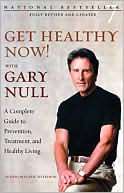By Ed Silverman // November 8th, 2011
Last August, AstraZeneca received a criminal indictment in Belgrade, Serbia, over allegations that local employees offered alleged bribes to physicians at the Institute of Oncology and Radiology, according to a filing made yesterday with the US Securities and Exchange Commission (see this). The indictment, however, had actually been previously disclosed when AstraZeneca reported earnings late last month (see this).
The indictment follows the arrests last year of several officials at the Institute for Oncology and Radiology of Serbia, including director Nenad Borojevic and representatives from several pharmaceutical companies, including AstraZeneca and Roche, on suspicion of accepting and giving bribes totaling about $1.4 million (read here and here).
An AstraZeneca spokesman writes us to say that “we intend to vigorously defend the matter and have filed a number of pending preliminary procedural objections that ask the Serbian criminal court to dismiss the indictment.”
The indictment comes amid widening probes by regulators in the US and the UK into alleged overseas corruption by the pharmaceutical industry. In late 2009, the head of the US Justice Department’s Criminal Division warned drugmakers that there will be more criminal enforcement against interactions with foreign officials as they seek violations of the Foreign Corrupt Practices Act.
In April, Johnson & Johnson was fined $70 million for bribing public doctors in several European countries - and paying kickbacks to Iraq - to illegally obtain business (read this). Three months ago, Pfizer provided the US Department of Justice and the SEC with info concerning “potentially improper payments” made by Pfizer and Wyeth personnel in connection with unspecified sales activities outside the US (see this). And over the past year, several other drugmakers, including Merck and Eli Lilly, received letters as the feds seeks to uncover any FCPA violations.
 November 23, 2011
November 23, 2011  Email Article |
Email Article |  Print Article |
Print Article |  Permalink | tagged
Permalink | tagged  video | in
video | in  Economic Crisis,
Economic Crisis,  Featured,
Featured,  Poverty,
Poverty,  Social Issues,
Social Issues,  Unemployment,
Unemployment,  Veteran Issues,
Veteran Issues,  Videos,
Videos,  War
War 









